Indian wallpaper designs and aesthetics are a timeless choice amongst designers and homeowners, and can be seen in luxury hotels. What makes Indian-style wallpapers so coveted are the pieces of history and culture it reflects so beautifully. And it is no surprise that these classic pieces of culture got commercialised and found its way on wallpapers for walls. In this blog, we will explore the various Indian paintings and how to select a wallpaper with Indian elements for your home.
Indian-Themed Wallpaper
The grandeur Indian culture is visible in its diverse arts forms. The rich tradition of Indian art and architecture is one of the most treasured pieces and dates back to hundred of years. The various art forms and paintings created in India are as diverse as the country itself. These Indian art and paintings are a remarkable reflection of the syncretic culture of India and the influences it had throughout history. The design elements of Indian paintings revolve around storytelling through religious motifs, hindu god and deities, symbols of the natural world such as flowers, trees, branches, spirituality, royalty as well as day-to-day agrarian society.
Go ahead and read about Indian art and paintings that are most in demand and are frequently featured on wallpapers.
1. Madhubani Art Wallpaper
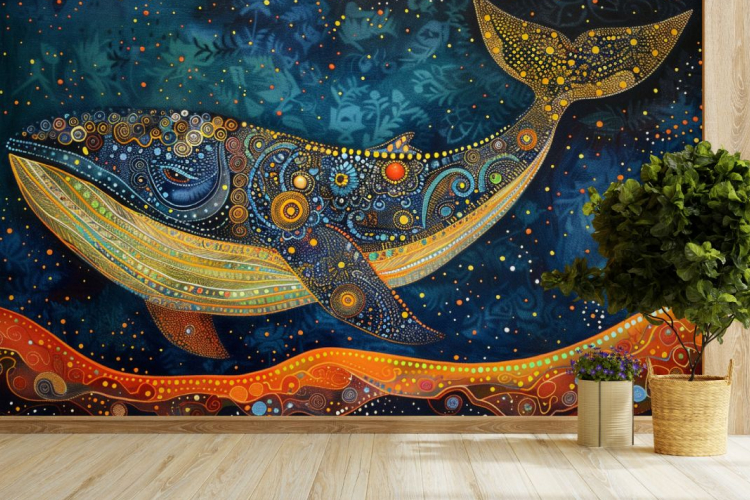
Madhubani art originates from the Mithila region of India and Nepal and is named after the district of Madhubani, Bihar. The Madhubani paintings feature a remarkable and intricate use of geometric patterns and saturated tones. Traditionally, these paintings were created by female members of a family and showcased major aspects of life such as birth and marriage, hindu deities such as Durga, Ram-Sita, as well as venerations like surya puja, chhat puja, and more. The technique of drawing these paintings were passed down through generations. Artists use their fingers, matchsticks, pen-nibs and brushes along with bright natural hues of red, green, yellow and black to draw beautiful paintings. The five distinguishing styles of Madhubani art are: Bharni, Katchi, Tantrik, Godna and Kohbar.
Traditionally drawn on the walls on mud huts—today these paintings are drawn on fabrics, paper and canvas. These paintings are digitally drawn and created for wallpapers as well. You can find plenty of wallpapers online as well as on wallpaper stores selling Indian-themed wallpapers which will have a Madhubani art-inspired wallpaper.
2. Pichwai Art Wallpaper
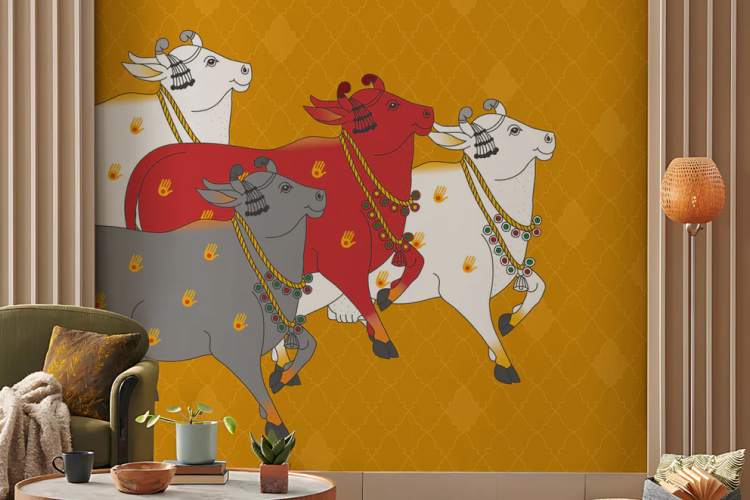
Pichwai paintings originated in Nathdwara, Rajasthan and features the birth and life of Shrinathji (child form of Lord Krishna), cows, gopis, lotus flowers and the natural world. The word pichhwai or pechhwai is formed from two words pich meaning behind and wai meaning which hangs. Hence the name means the one which hangs behind. These elaborate paintings were first made and hung behind the huge idols of Shrinathji in Hindu temples of the Pushtimarg. These paintings are labour intensive and are made by an entire group of skillful painters who masterfully bring their design to life on a canvas. The painters use gold and silver foil to elevate the glimmer of the paintings.
In earlier times, the aim of these massive and elaborate paintings were to educate and depict stories (leelas) of Lord Krishna in a way that it was understood by the common folks who couldn’t read or write. Today, pichwai paintings adorn the walls of homeowners and designers who have an eye for cultural motifs and designs. These paintings also feature on wallpapers for walls and offer an ethereal look to your living space.
3. Tanjore Painting Wallpaper
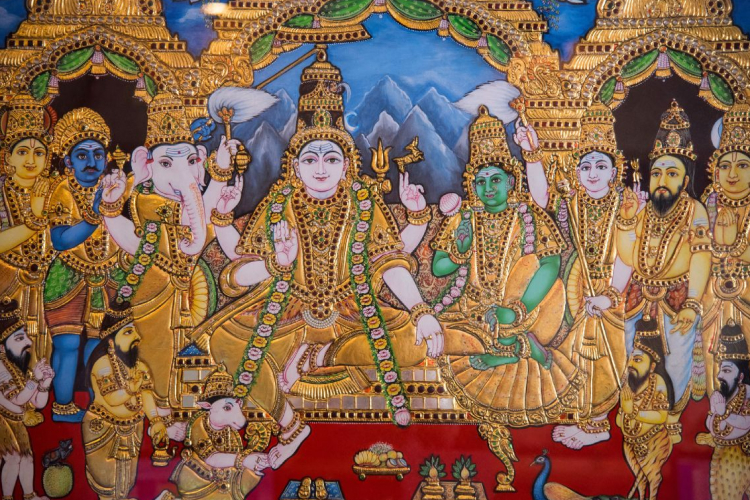
Tanjore paintings branched out from Vijayanagar school of paintings in Southern India. Artists who draw Tanjore paintings use natural dyes made of white lime powder and tamarind seeds on canvas stretched on wooden boards. They also incorporated gold-coated silver leaf to highlight the key points of the painting. The common themes visible in Tanjore paintings were deities, depictions from Hindu literature and mythology, pious ceremonies, festivals, processions and sometimes scenes of the natural world. The brushes used in making of these paintings were made of bamboo or thin metal strips to replicate a nib. The symbols, patterns and designs made on Tanjore paintings are extremely intricate and beautiful and if you wish to see these glorious designs on your walls, start looking for Tanjore paintings wallpapers online or get one customised.
4. Warli Painting Wallpaper
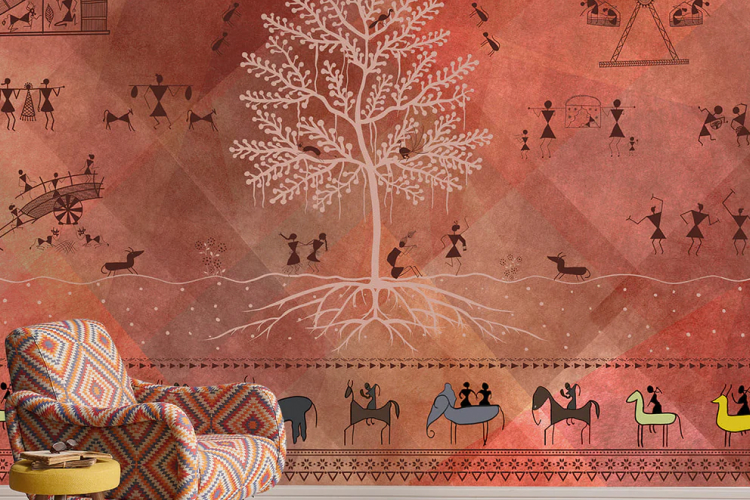
Warli Art is a traditional tribal art form and originated in Sahyadri Range of Maharashtra. It dates back to the 10th Century CE and is an exquisite folk art; so much so that wallpapers featuring Warli art have caught the attention of designers and homeowners alike. With a chewed bamboo stick used as a brush and a white colour made by mixing rice flour and water, with gum as a binder, the Warli tribe created paintings featuring nature and its elements as the central themes. The other colours that were frequently used in Warli art included orange and brown tints from henna, and brick red. The paintings also featured everyday lives of the tribe, wedding ceremony, cattles, deities, mythologies, etc. If you want to incorporate this age-old traditional art form into your home, you can add both paintings and wallpaper featuring Warli art.
5. Gond Art Wallpaper
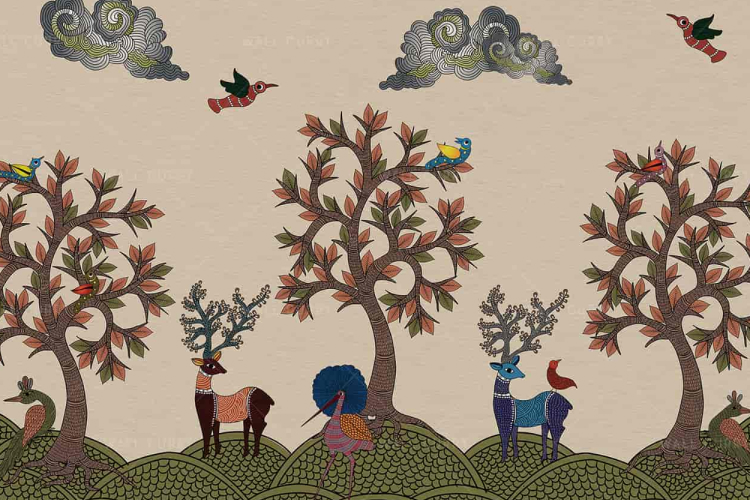
Add an impeccable touch of intricate artistry to your walls by incorporating Gond Art wallpaper. Gond art is named after the largest tribe found in the state of Originated in the state of Madhya Pradesh, Maharashtra, Andhra Pradesh and Chattisgarh. The elements of the Gond paintings are religious motifs, flora and fauna, intricate patterns, lines and dots, bright colours, and depiction of day-to-day life. The colours for the Gond paintings are drawn from flowers and coloured stones, and there is a prominent use of orange, yellow, blue and red. Gond paintings also feature the natural world including trees, flowers, animals and birds like peacock, elephant, tiger, cows, deers, fishes etc. The intricacy and breathtaking designs of Gond paintings captivate the eyes of the onlooker. Bring home this traditional tribal art as Indian wallpapers aesthetics to your living space and elevate the beauty of your home.
6. Indian Ikat Art
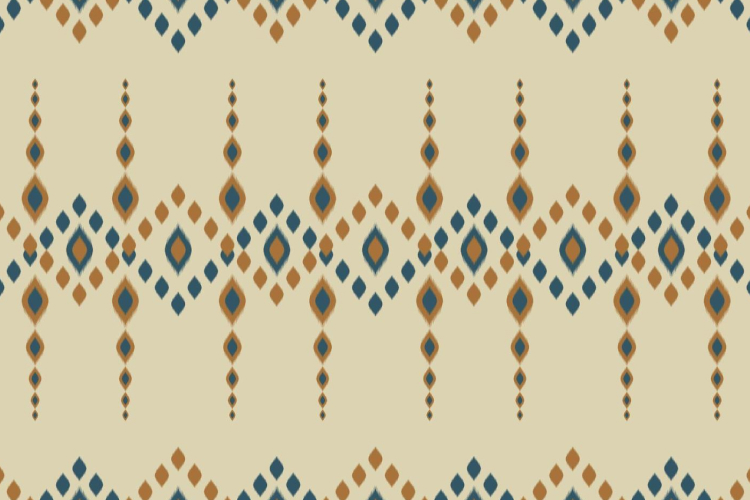
Indian Ikat is a dyeing technique used on cloth in the state of Odisha, Gujarat, Telangana and many others. Although Ikat is believed to have originated in Southeast Asia, India has developed its own Ikat dyeing techniques throughout history. Ikat dyeing involves meticulous binding of threads before dyeing in a way that the dye only reaches certain parts of the threads. The craft workers repeat this process multiple times to achieve the desired pattern. The design patterns of Ikkat can be replicated on wallpapers for walls for a desired Indian aesthetic.
7. Kalamkari Art
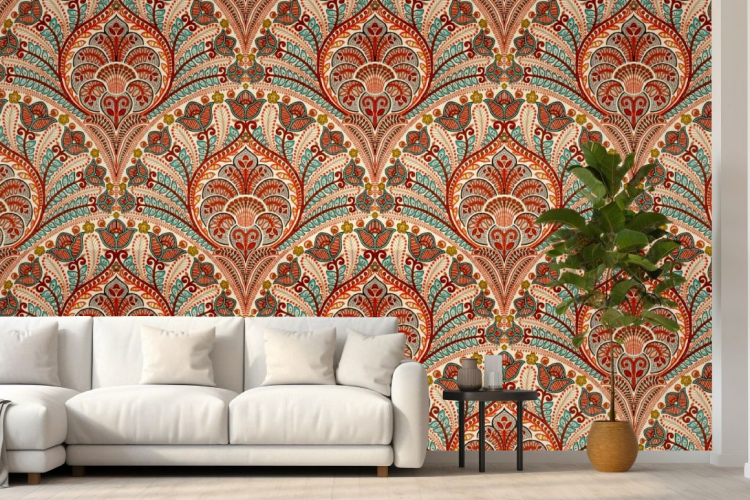
Kalamkari is another ancient textile printing Indian art form, believed to be about 3000 years old. It has its roots in the state of Andhra Pradesh and gained prominence during the Vijayanagar Empire. The name Kalamkari is a blend of two words “kalam” which means pen and “kari”, meaning artistry. The two techniques of Kalamkari art are block printing and hand painting on a piece of cloth. Many Kalamakri paintings depicted Hindu gods and goddesses and episodes from epics the Ramayana, and the Mahabharata. The frequent colours used in Kalamkari paintings are red, black, brown, and violet. Having Kalamkari design wallpapers on your walls adds a pop of colour to your home and is a great way to have a piece of traditional art with a modern twist.
8. Rajasthani Block Print
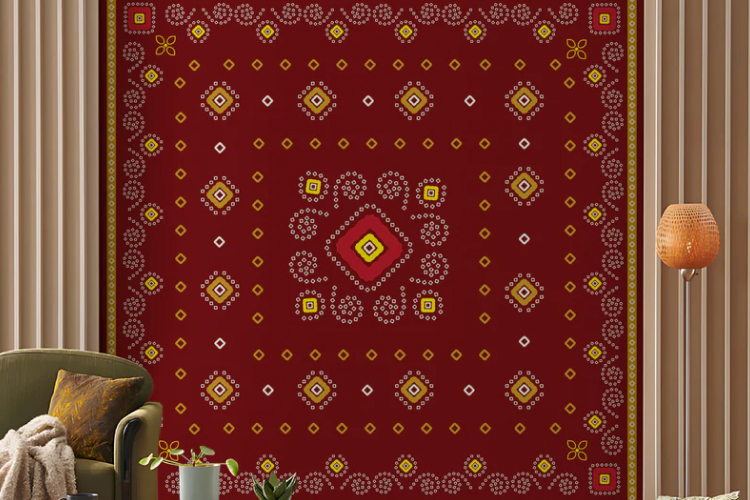
Rajasthani block print wallpaper, one of the oldest dye and printing techniques in the Indian subcontinent, dates back to the 12th century. Typically, teak and sheesham wood are used for block printing. The block is prepared by carving designs on the smooth surface of the block. Once the desired design is achieved, the wooden block is dipped into a dye and is pressed against a canvas or piece of fabric in repetition to get colourful clusters of patterns. Originally, these dyes were obtained from natural sources such as turmeric, saffron, green leaves, powdered seeds, dried flowers, barks etc. The style and pattern of using blocks for printing differs from one area to another. Infuse the Rajasthani block print style on wallpapers and decorate the walls of your living rooms, bedrooms, or any space that requires a revamp.